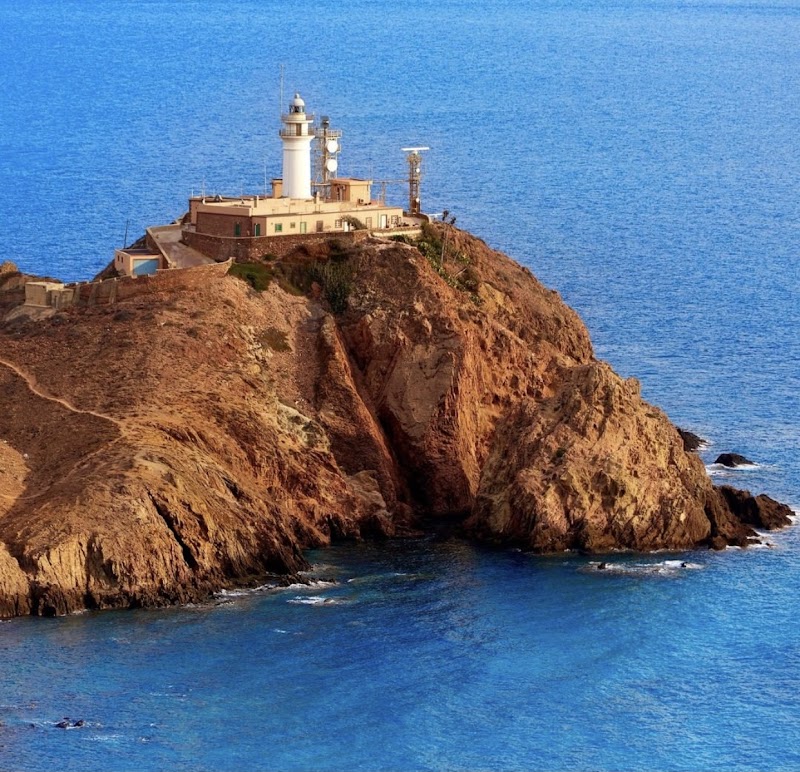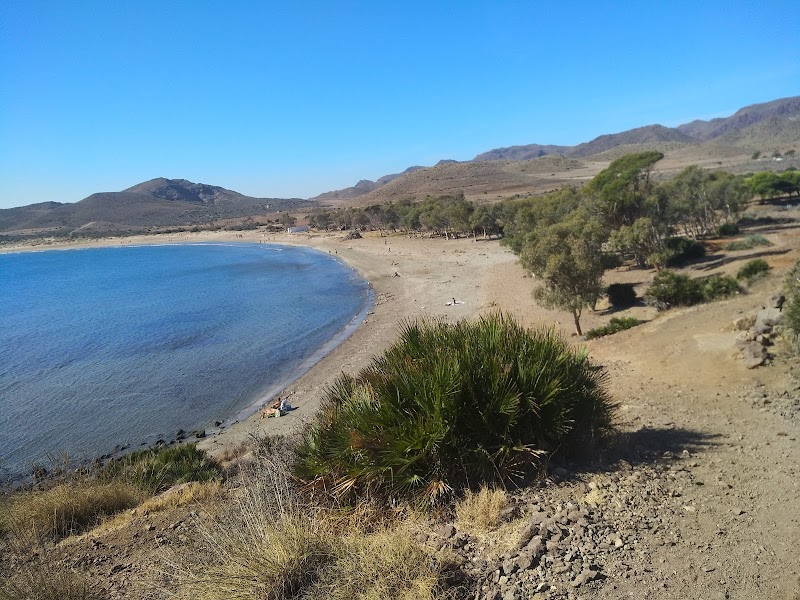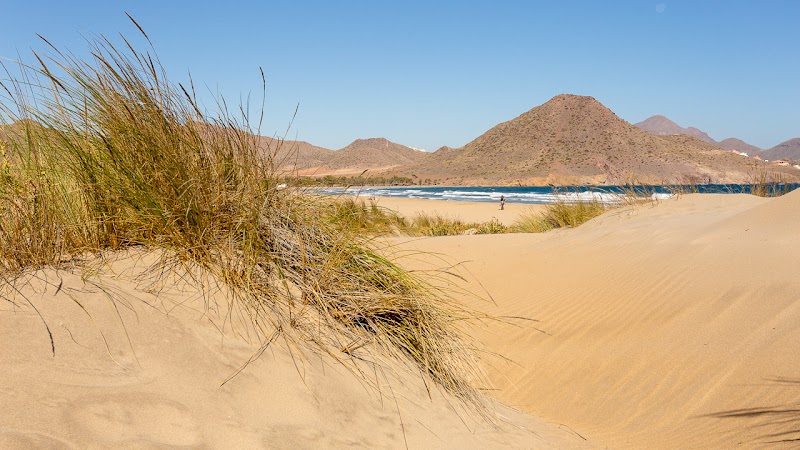Welcome to Cape of Gata: A Mediterranean Haven
Witness where the Mediterranean Sea meets the desert, in the fascinating Cape of Gata, one of Spain's unspoiled gems. Renowned for its untouched nature, diverse wildlife, and tranquil beaches, this stunning natural park is a paradise for nature enthusiasts. From ancient salt flats and volcanic rock formations to vibrant coral reefs and secluded coves, every aspect of Cape of Gata screams for exploration. It's not just a place to visit; it's a place to immerse yourself in.
Explore Cape of Gata with Our Comprehensive Tourist Map
To help you discover this unique landscape, we've designed an extensive tourist map of Cape of Gata. The map is segmented into several layers, focusing on different aspects of the region: cities, towns, museums, monuments, beaches, and tourist attractions. Each point on the map comes with a detailed description, estimated visit time, budget, and traveller recommendations. Our map, which you can save on your mobile devices, ensures an enriching journey through Cape of Gata.
Maximizing Your Visit to Cape of Gata with Our Map
Our interactive tourist map of Cape of Gata is more than a simple guide; it's an essential tool for an optimal visit. Ability to visualize all nearby points of interest, you can explore this breathtaking region seamlessly. From museums and monuments to cities and beaches, each layer on the map is filled with points of interest. For instance, after visiting the iconic Castle of San Felipe, use the map on your mobile to find all nearby attractions and continue your tour.
Our map also aids in planning your journey. If you're in the northern part of Cape of Gata, you can arrange the points on the map in route layers for better planning. Calculate the time from one point to another, thanks to the estimated visit times provided. Imagine strolling through the charming streets of San José, then using the map to find the quickest route to the secluded beaches of Monsul and Genoveses. With our map, exploring Cape of Gata is a breeze.
Unveil the Iconic Places of Cape of Gata
Cape of Gata is teeming with iconic places that narrate a riveting story. From historical landmarks like the Old Town of Níjar with its vibrant pottery, to natural wonders like the Lighthouse of Cabo de Gata, every location carries significant historical and cultural value. Embark on a journey with us to know more about these iconic places.
Immerse in the Cultural Heritage: Níjar and its Pottery
Start your journey in the captivating town of Níjar, renowned for its traditional Andalusian ceramics. Watch artisans skillfully mold clay into beautiful pieces of art. Schedule your visit in the morning to witness the artisans at work and grab a unique souvenir.
The Majestic Beacon: Lighthouse of Cabo de Gata
Continue to the Lighthouse of Cabo de Gata, the towering beacon guiding sailors for centuries. Visit in the late afternoon for a mesmerizing view of the sun casting a golden glow over the undulating sea, creating an unforgettable spectacle.
Unique and Authentic Experiences in Cape of Gata
Visiting Cape of Gata goes beyond sightseeing; it's about immersing yourself in experiences that linger long after your visit. Whether it's trekking through the volcanic landscapes, snorkeling in the crystal-clear waters, or relishing the local cuisine, Cape of Gata offers a plethora of authentic and memorable experiences.
Into the Wild: Hiking Trails and Wildlife
For the adventurous, the park's diverse landscapes can be explored through its network of hiking trails. The best time to hike is early morning or late afternoon, when the wildlife is most active. Don't miss the chance to spot the flamingos at the Salt Pans of Cabo de Gata!
Under the Sea: Snorkeling and Marine Life
Dive into the Mediterranean Sea and uncover an enchanting underwater world. The reefs around El Arrecife de las Sirenas are teeming with vibrant marine life. Snorkeling here in the late morning offers the best visibility.
Taste of Andalusia: Local Cuisine
Savor the flavors of Andalusia on a culinary journey through Cape of Gata. Relish the region's fresh seafood, especially the 'gurullos con conejo', a traditional rabbit stew, and the locally-produced olive oil. Experience these delicacies at a local taverna for an authentic dining experience.
Our map of Cape of Gata is more than a navigational tool; it's your gateway to discovering the diverse treasures of this stunning region. Each point of interest is not just a location, but an experience of Cape of Gata's rich blend of history, nature, and culture.

Booking.com
Planning Your Visit to Cape of Gata
Whether you're a history enthusiast, a nature lover, or a beach aficionado, Cape of Gata has something for everyone. However, to truly enjoy your visit, planning ahead is crucial. Let us guide you with some practical information to help you explore this natural paradise.
Best Beaches by Season
If you're looking for serene beaches and pristine waters, Cape of Gata won't disappoint. However, it's crucial to be aware of the best times to visit these coastal jewels. In the summer months (June to August), the beaches of Monsul, Genoveses, and Las Negras are at their best. To avoid crowds, consider visiting early in the morning or late in the afternoon. In spring and fall, Playa de los Muertos and Playa de Agua Amarga offer tranquility and stunning landscapes without the summer rush. Always check our tourist map for real-time information about the beaches, including their current crowd status and water conditions.
Monument Timings and Must-See Attractions
Cape of Gata is a treasure trove of cultural and historical attractions. The Castle of San Felipe, an 18th-century fortress, is open from Tuesday to Sunday, 10 a.m. to 6 p.m. The Lighthouse of Cabo de Gata, a must-see, operates daily from 9 a.m. to 7 p.m. Don't miss the Salt Pans of Cabo de Gata, a paradise for birdwatchers, especially during the flamingo migration season in spring and fall. Lastly, the town of Níjar, known for its pottery and traditional Andalusian architecture, is worth exploring at any time of the day.
Exploring Natural Trails and Wildlife Areas
Hiking in Cape of Gata is an unforgettable experience, offering an opportunity to explore diverse landscapes and wildlife. Most trails are open throughout the year, but for the best experience, avoid the summer months, when temperatures can soar. Early mornings or late afternoons are the ideal times to hike. The most popular trails include the Sendero de las Amatistas and the Sendero de los Genoveses. Remember to carry water, wear comfortable footwear, and follow the marked trails to protect the environment. At the Salt Pans, don't forget your binoculars for a rewarding birdwatching experience.
As you plan your visit to Cape of Gata, remember that the region's charm lies in its mix of nature, history, and culture. With careful planning and our comprehensive tourist map, you can experience the best of Cape of Gata at your own pace, creating unforgettable memories.

Frequently Asked Questions (FAQs)
1. When is the best time to visit Cape of Gata?
Cape of Gata is an all-year-round destination; however, best times to visit are from April to June and September to November. During these months, the weather is pleasant, making it ideal for exploring the hiking trails, beaches, and wildlife. The summer months of July and August can be quite hot, especially for strenuous activities like hiking.
2. What unique wildlife can I expect to see in Cape of Gata?
Cape of Gata boasts a rich biodiversity, housing numerous species of birds, reptiles, and marine life. One of the unique sights is the flamingos at the Salt Pans of Cabo de Gata, particularly during migration seasons in spring and autumn. Underwater, El Arrecife de las Sirenas is a popular spot for snorkeling, where you can see a variety of fishes and sea anemones.
3. Which local food specialties should I try in Cape of Gata?
Andalusian cuisine forms a major part of your visit to Cape of Gata. You must try 'gurullos con conejo', a traditional rabbit stew, and sample the locally-produced olive oil. The region is also known for its fresh seafood, which is often caught daily and served at local taverns.
4. How can I get around Cape of Gata?
There are various ways to explore Cape of Gata. Car rental is a popular option as it provides flexibility to explore the region at your own pace. Public buses are also available, connecting major towns and attractions. For those interested in ecotourism, cycling and hiking are excellent ways to navigate the natural park.
5. Where should I stay in Cape of Gata?
Where you stay in Cape of Gata largely depends on your interests. For beach lovers, San José offers a variety of accommodations close to the stunning beaches of Monsul and Genoveses. If you're keen on exploring the cultural heritage, consider staying in the charming town of Níjar. For nature enthusiasts, there are several eco-lodges and campsites within the natural park itself.
6. Are there any safety considerations I should be aware of while hiking in Cape of Gata?
Yes. While hiking in Cape of Gata is generally safe, it's important to take some precautions. Always stay on marked trails, carry plenty of water, wear suitable footwear, and avoid hiking during the hottest part of the day. Also, make sure to check the weather forecast before setting off, especially during the rainy season when trails can become slippery.

